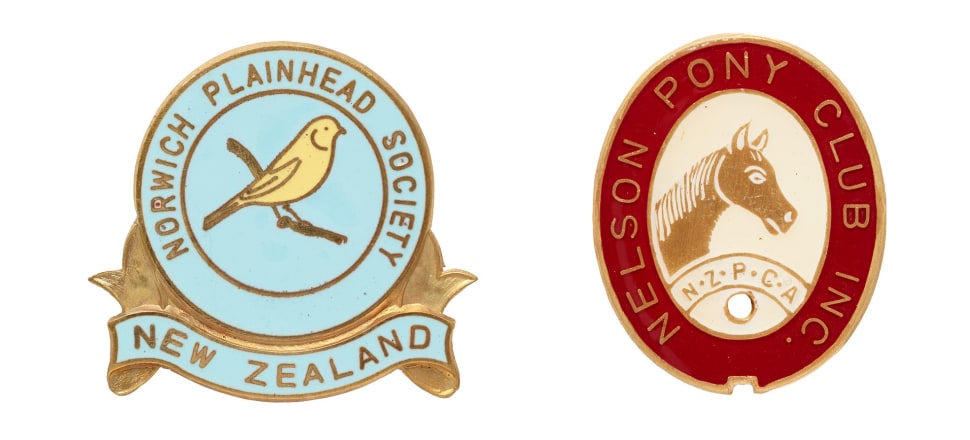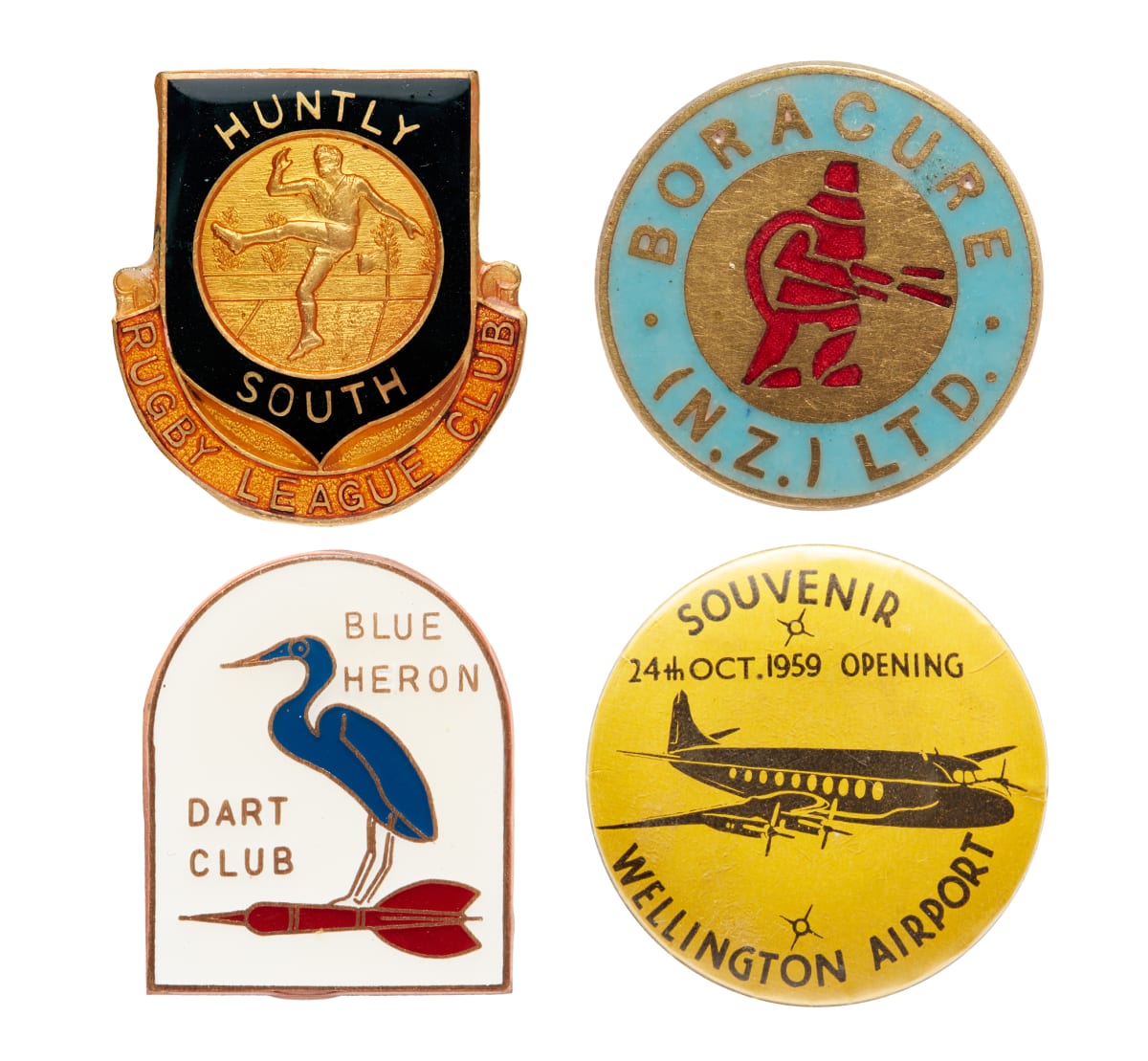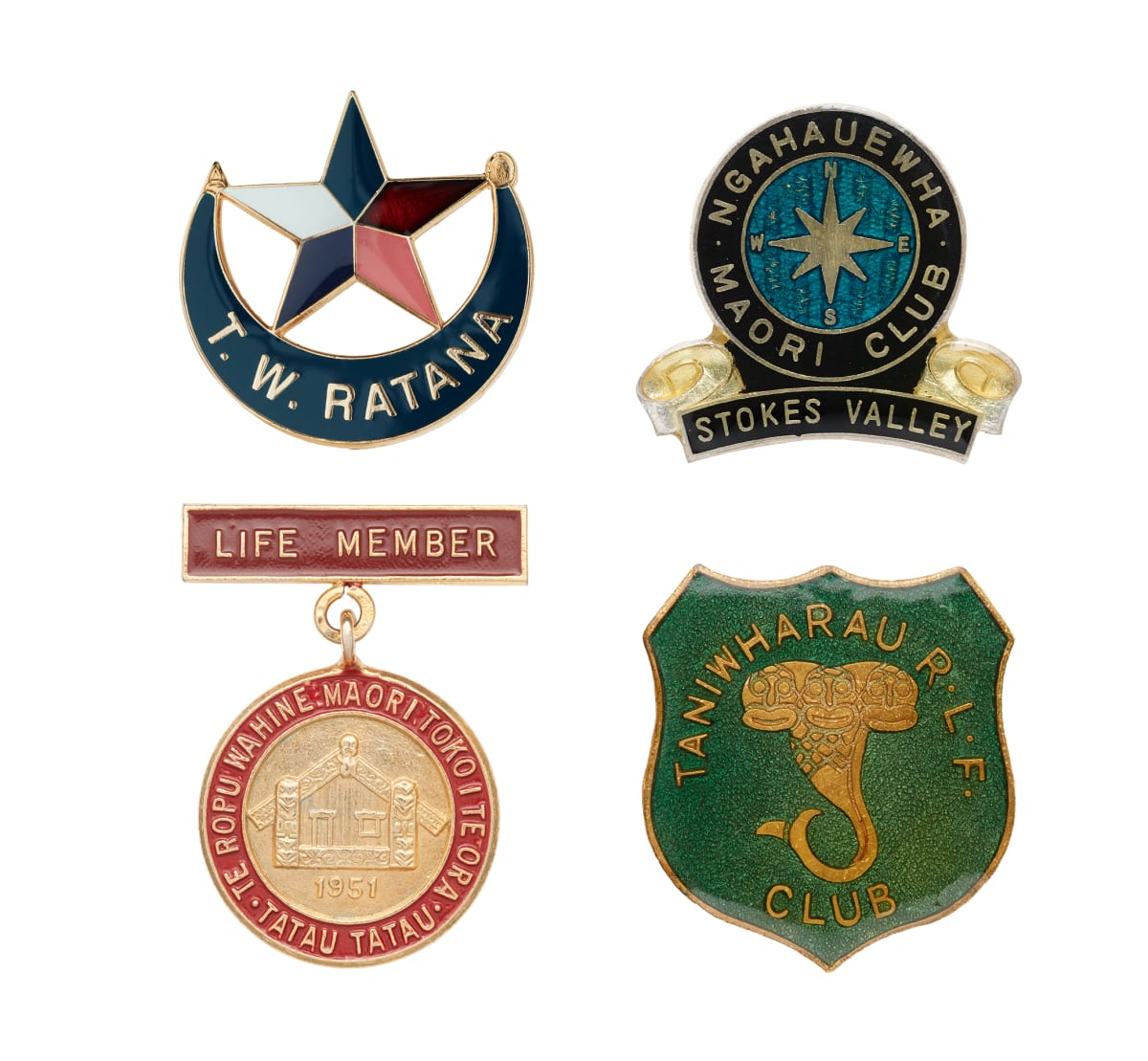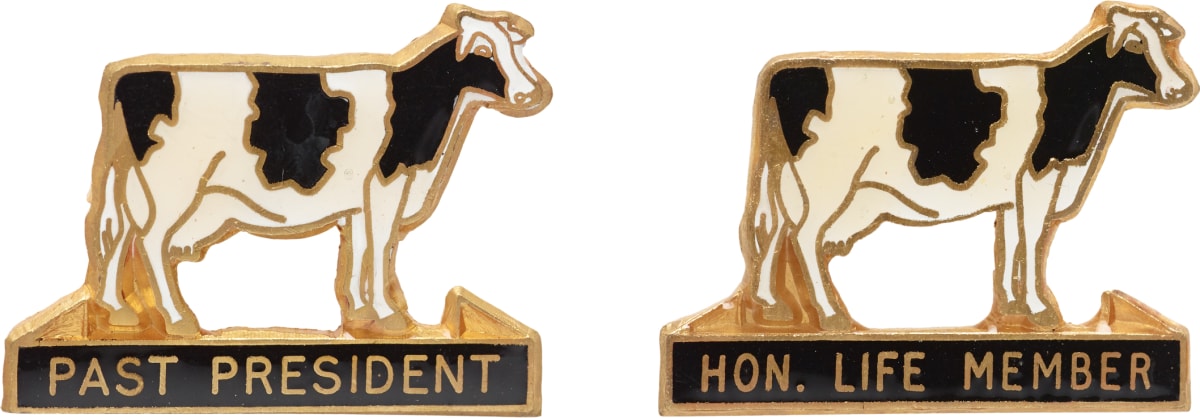
A brief history of New Zealand on a pin
The best thing about a small and sweetly formed new illustrated book on the history of New Zealand badges is its discovery or rediscovery of a great New Zealand artist, who worked, surely, with a range of magnifying glasses, as he went about his business as a kind of miniaturist. Trevor Dick, born 1930, danced on the head of a pin: at his workshops in Majoribanks St in Mt Victoria, Wellington, and later in Petone, he produced untold thousands of badges, designing amazing forms and shapes on those little discs, or "mini billboards" as the book's co-author Stephanie Gibson puts it in her introduction to Tiny Statements: A social history of Aotearoa New Zealand in Badges (212 pages, limpbound format), published by, of course, those state-appointed hoarders, Te Papa, which purchased the Dick collection in 2003. Nearly 200 badges are photographed in Tiny Statements. Most of them were designed by Trevor Dick. Three of his works feature in the panel below - look at his flair for a sense of movement in the Huntly badge, the symmetry of the dart and the bird in the Dart Club badge, the drama in his Spray Man superhero design for a pest control company. What gorgeous works of art. I'd rather frame them than wear them.

As a social history of badges, Tiny Statements also publishes photos of badges used as emblems of resistance, as per the panel below. Slogans do all the talking. Artistry is a luxury the badges cannot accommodate, and although the feminist badge (top right) goes for a wordless illustration, the graphic is emphatic and artless, a message of strength. They place the bourgeois wearers of middle New Zealand badges up against the wall.

The most striking badges in Tiny Statements play with Māori motifs. The hand of Trevor Dick can be seen in two of them - the three-headed taniwha at bottom right, and above it, the badge of the Nga Hau E Wha Maori Club of Stokes Valley, although the design credit is given to Te KaKaireka Puhia. The other two badges bear the sad caption, "Maker unknown." All we know is that they were artists.

My father had a badge with his name on it. It was spelled in capital letters in white against a black background; the badge was long and narrow, and the pin was narrow and savage. I loved it, was in awe of it - it was the first byline I was ever aware of and I longed to have my name on something as solid as its metal strip. I have had to settle for newsprint and the unsurfaces of cyberspace. Badges have a permanence. Their purpose was to signify a belonging, to a cause or a faith or a pony club - Foucault talks about the body as a "surface of inscription", and the badges float in the white pages of Tiny Statements, torn from the bodies of their wearers, left to exist as the bric-à-brac of the New Zealand way of life. The text is informative, and reads a bit earnestly, like a school project. But every facing right-hand page has photos of badges on it and they always lighten the mood, brighten the project. The two badges below were made to honour officials elected by the New Zealand Friesian Association. I bet they wore them with pride and also with a smile. The artist, of course, was Trevor Dick.

Tiny Statements: A social history of Aotearoa New Zealand in Badges by Stephanie Gibson and Claire Regnault (Te Papa Press, $40) is available in bookstores nationwide.







